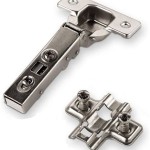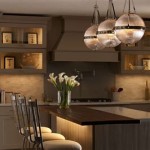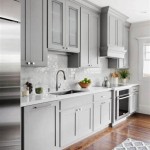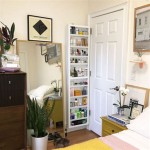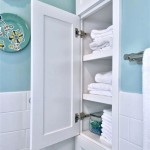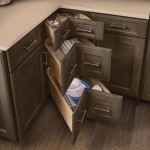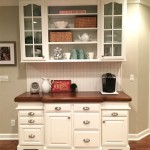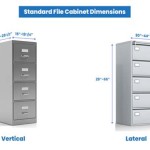Do You Need To Prime Cabinets Before Painting Them?
Painting kitchen cabinets presents an opportunity to revitalize a space without the expense of a full remodel. Achieving a professional and durable finish on cabinets, however, often hinges on proper preparation, and a key element of that preparation is priming. The question of whether priming is necessary before painting cabinets is frequently debated, but the answer is rarely a simple yes or no. It depends heavily on the cabinet material, the existing finish, and the type of paint being used. This article explores the factors that determine whether priming is a crucial step in the cabinet painting process.
Priming serves several important functions beyond simply adding another layer of material. It prepares the surface for paint adhesion, seals porous surfaces, blocks stains, and creates a uniform base color. Skipping the primer can lead to issues such as peeling paint, uneven color, and the reappearance of underlying stains. Furthermore, priming can significantly improve the longevity of the paint job, protecting the cabinets from moisture and wear and tear.
Understanding the Cabinet Material
The composition of the cabinets plays a significant role in determining the need for primer. Different materials have varying levels of porosity and reactivity to paint. Understanding these differences is essential for proper preparation.
Wood Cabinets: Solid wood cabinets, especially those made of porous woods like oak or pine, almost always require priming. The natural grain of the wood can absorb paint unevenly, leading to a blotchy or inconsistent finish. Primer seals the wood grain, creating a smooth and uniform surface for the paint to adhere to. Furthermore, wood can contain tannins and other substances that can bleed through the paint, causing discoloration. Primer acts as a barrier to prevent this from happening. For cabinets made of hardwoods like maple, the need for priming is less critical but still beneficial, particularly if the cabinets have an existing finish.
Laminate Cabinets: Laminate surfaces are typically non-porous and designed to resist liquids and adhesives. This very quality presents a challenge when painting. Standard paint will often struggle to adhere to laminate, leading to peeling and chipping. A specialized bonding primer is essential for laminate cabinets. These primers are formulated to etch the surface of the laminate, creating a mechanical bond for the paint to grip. Without this type of primer, the paint is unlikely to last.
MDF (Medium-Density Fiberboard) Cabinets: MDF is a common material for cabinet construction because of its smooth, consistent surface. However, MDF is highly absorbent, and its raw edges can swell if exposed to moisture. Priming MDF cabinets is crucial to seal the surface and prevent the absorption of paint, which can lead to warping and an uneven finish. Two coats of primer may be necessary, especially on the edges, to ensure complete sealing.
Metal Cabinets: While less common in residential kitchens, metal cabinets require specific priming considerations. Metal surfaces are generally non-porous, but they can be prone to rust. A metal primer is essential to prevent rust from forming under the paint. These primers often contain rust inhibitors and create a smooth base for the paint to adhere to. It's also important to ensure the metal surface is thoroughly cleaned and free of any existing rust before applying the primer.
Assessing the Existing Finish
The condition and type of the existing finish on the cabinets also impacts the necessity of priming. A well-adhered, smooth finish presents a different scenario than a peeling or damaged surface.
Cabinets with a Sound Finish: If the existing finish is in good condition, meaning it is not peeling, chipping, or cracking, and is relatively smooth, the need for priming is less critical, but still often recommended. In these cases, a light sanding is usually sufficient to create a slightly rough surface for the new paint to grip. However, even with a sound finish, priming can still provide added benefits, such as improved adhesion and color uniformity. This is especially true if changing from a dark color to a light color.
Cabinets with a Damaged Finish: Cabinets with peeling, chipping, or cracking paint require extensive preparation before painting. All loose paint must be removed through scraping and sanding. This process can leave the surface uneven and expose the underlying material. Priming is then essential to create a smooth and uniform base for the new paint. The primer fills in imperfections and ensures that the new paint adheres properly to the repaired surface.
Cabinets with a Glossy Finish: Glossy finishes are notoriously difficult to paint over. The smooth, non-porous surface prevents paint from adhering properly. While sanding can help to rough up the surface, a primer specifically designed for glossy surfaces is highly recommended. These primers contain bonding agents that create a strong connection between the glossy finish and the new paint. Without such a primer, the paint is likely to peel or chip over time.
Cabinets with a Stained Finish: If the cabinets have been stained, the stain may bleed through the new paint, especially if a light-colored paint is being used. Primer acts as a barrier to prevent the stain from migrating into the topcoat. Stain-blocking primers are specifically formulated to prevent this problem. These primers are often oil-based or shellac-based and provide a superior barrier compared to standard latex primers.
Choosing the Right Primer
Selecting the appropriate primer is just as important as deciding whether to prime in the first place. Different primers are formulated for specific purposes and materials. Using the wrong primer can be ineffective or even detrimental to the final result.
Latex Primers: Latex primers are water-based and are a good choice for most interior painting projects, including cabinets made of wood or MDF. They are easy to apply, clean up with water, and have low VOCs (volatile organic compounds). Latex primers provide good adhesion and sealing properties, making them suitable for preparing cabinets for painting. However, they are not as effective at blocking stains or adhering to glossy surfaces as other types of primers.
Oil-Based Primers: Oil-based primers are known for their excellent adhesion, stain-blocking properties, and ability to seal porous surfaces. They are a good choice for cabinets with existing stains or for cabinets made of wood that needs to be thoroughly sealed. However, oil-based primers have a strong odor, require mineral spirits for cleanup, and can be more difficult to work with than latex primers. They also tend to yellow over time, which can be a concern if painting cabinets a light color.
Shellac-Based Primers: Shellac-based primers are the most effective at blocking stains and odors. They dry quickly and provide a hard, durable surface for paint to adhere to. Shellac primers are a good choice for cabinets with stubborn stains or for cabinets that have been exposed to smoke or water damage. However, they are the most difficult to work with, require denatured alcohol for cleanup, and have a strong odor. They can also be brittle and prone to cracking if applied too thickly.
Bonding Primers: Bonding primers are specifically formulated to adhere to slick, non-porous surfaces like laminate and metal. They contain additives that create a mechanical bond with the surface, allowing paint to adhere properly. These primers are essential for painting laminate cabinets or metal cabinets. They are available in both latex and oil-based formulas, with latex being the more common and user-friendly option.
Self-Etching Primers: For metal surfaces, self-etching primers are often recommended. These primers contain acid that etches the metal surface, creating a strong bond for the primer and subsequent paint layers. They not only promote adhesion but also provide corrosion protection, preventing rust from forming. The use of safety glasses and gloves is recommended when applying self-etching primers due to the presence of acid.
In conclusion, the necessity of priming cabinets before painting depends on a variety of factors, including the cabinet material, the existing finish, and the desired result. While there are situations where priming may not be absolutely essential, it is generally a good practice that can significantly improve the quality and longevity of the paint job. Taking the time to properly prepare the cabinets, including priming, will result in a more professional and durable finish.

How To Prime Cabinets For A Smooth Finish The Turquoise Home

Refinish Kitchen Cabinets With Kilz Restoration Primer

How To Paint Kitchen Cabinets From A Diyer Who Has Done It 3 Times

How To Prime Cabinets For A Smooth Finish The Turquoise Home

How To Paint Laminate Cabinets Without Sanding The Palette Muse

The Best Way To Paint Kitchen Cabinets No Sanding Palette Muse

How To Paint Kitchen Cabinets A Step By Guide Confessions Of Serial Do It Yourselfer

How To Paint Kitchen Cabinets A Step By Guide Confessions Of Serial Do It Yourselfer

The Best Primer For Cabinets Erin Zubot Design

How To Prime Cabinets For A Smooth Finish The Turquoise Home
Related Posts

